Introduction of Layout Tool Functions & Subgraphic Functions
Hello everyone!
Summer is nearing its end in Japan, but the days are still hot.
How is it in your place?
Layout Tool] function to change the style of in-game screens and menus
This function allows you to change the graphic materials and layout of "screens that appear throughout the game," including the title screen and game over screen, as well as the main menu and screens during battles.
By using the Layout Tool, you can, for example, completely change the battle result screen to match the atmosphere of the game you are creating.
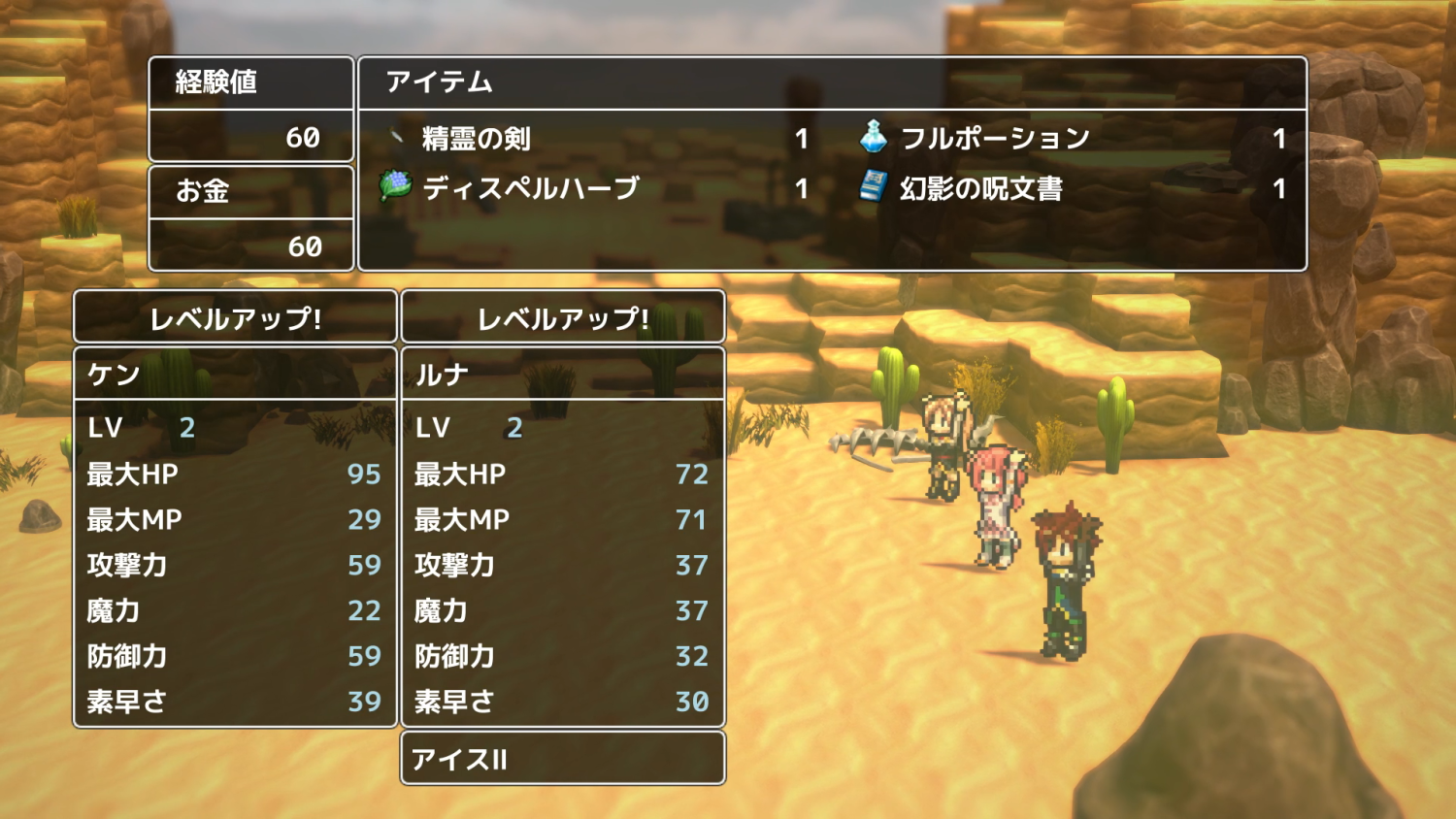
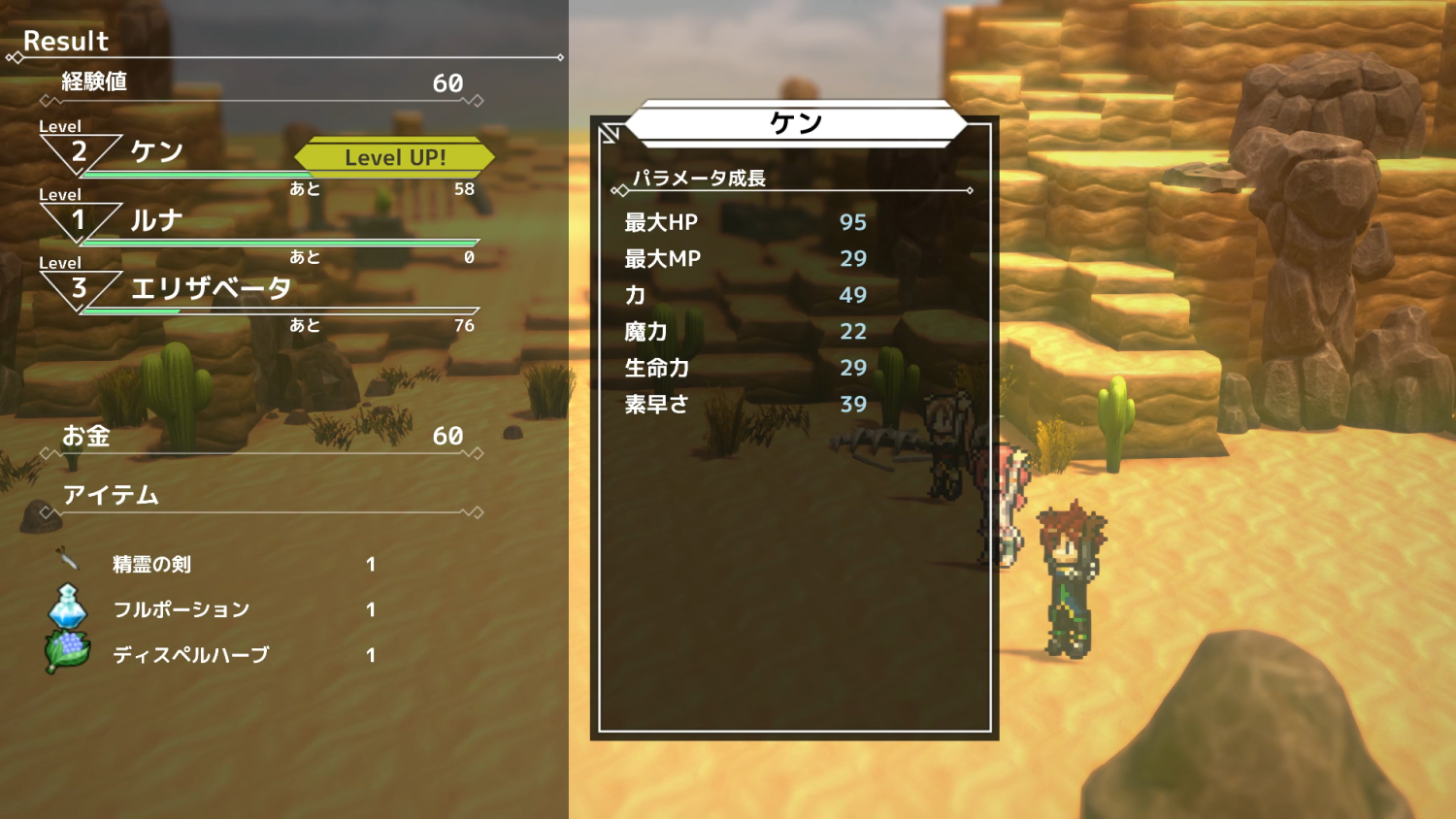
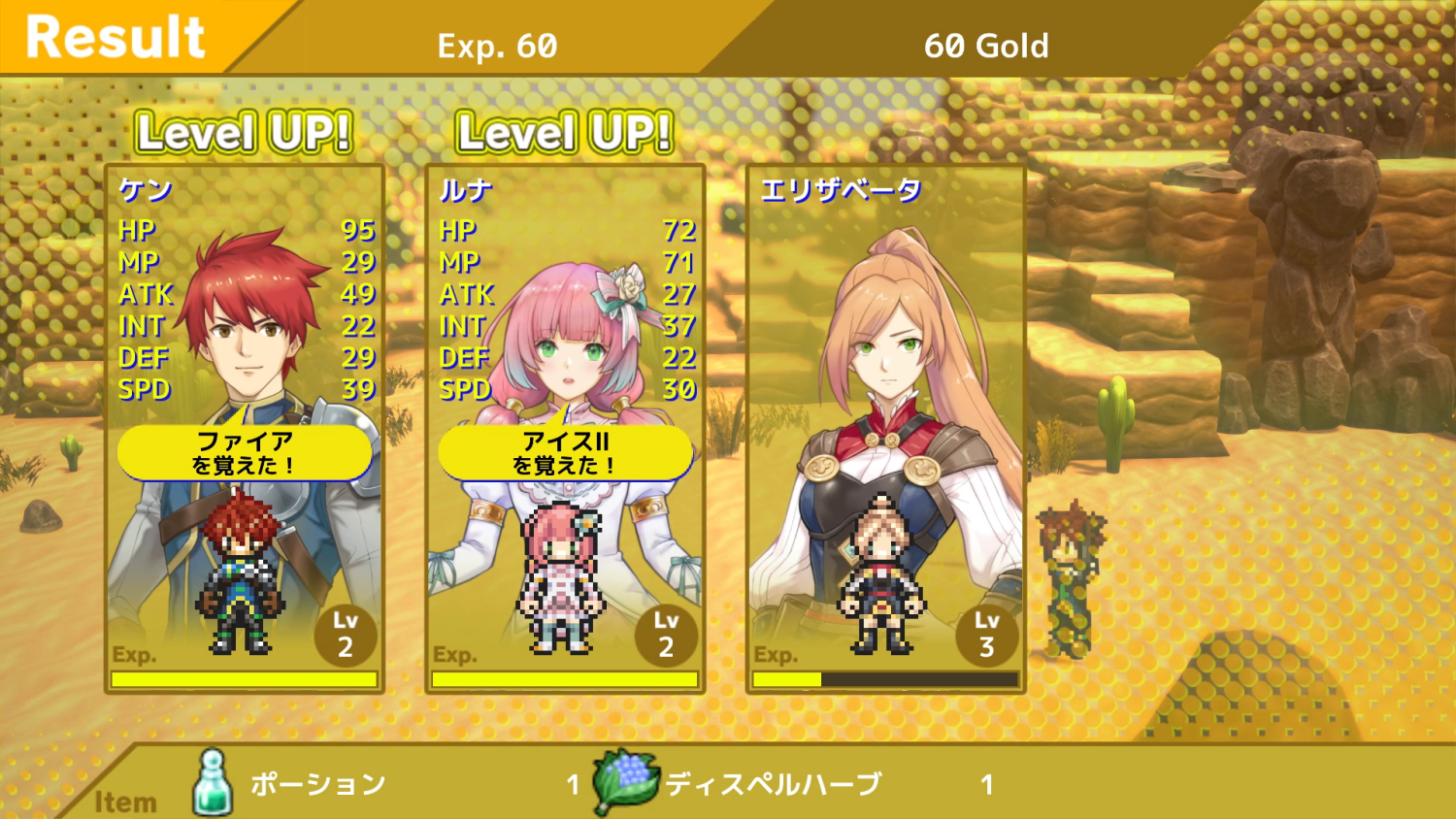
You can also create multiple layouts and switch between them for use in the event panel.
For example, you can register several layouts of conversation windows and have a special window appear only when you are talking to a particular character.
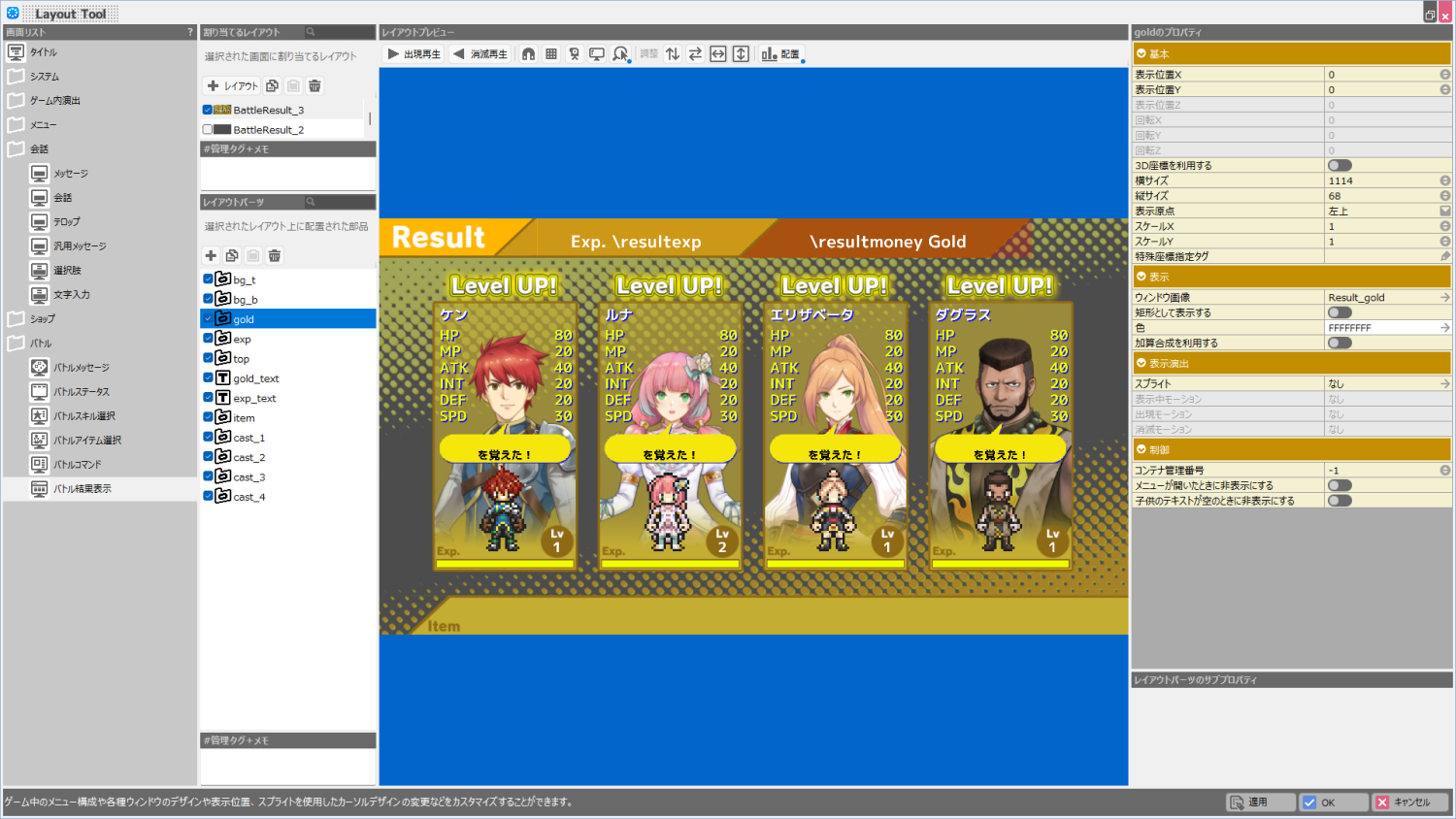
Layout tool] is a tool that can change the atmosphere of the game if you know how to use it.
However, since this feature is closely intertwined with the game system, it is honestly a complicated feature at this point.
For example, to set a single HP gauge, there is a wide range of items to be set, including size and position, as well as minimum, maximum, and initial values, how many cast members' HP to refer to, the color of the gauge and how much HP to change the color when the gauge decreases...and so on.
We will continue our efforts to make these things as easy to understand as possible with our expressions and UI....
We also believe that there is a lot of room for further development in terms of functionality.
We would like to make it better with your input, so thank you in advance!
Subgraphic] function to create new stamps by combining parts
This function allows you to combine models, models and particles into a single [stamp] (an object on the map).
For example, you can prepare part models of a part of a castle wall, a spire, a flag... and combine them to create a castle with different patterns, or you can make the foundation of a house, roof, windows, doors, balconies, etc. and combine them to make a small house or a large mansion.
You can also combine the pot and smoke particle effects to create a simmering pot, for example.
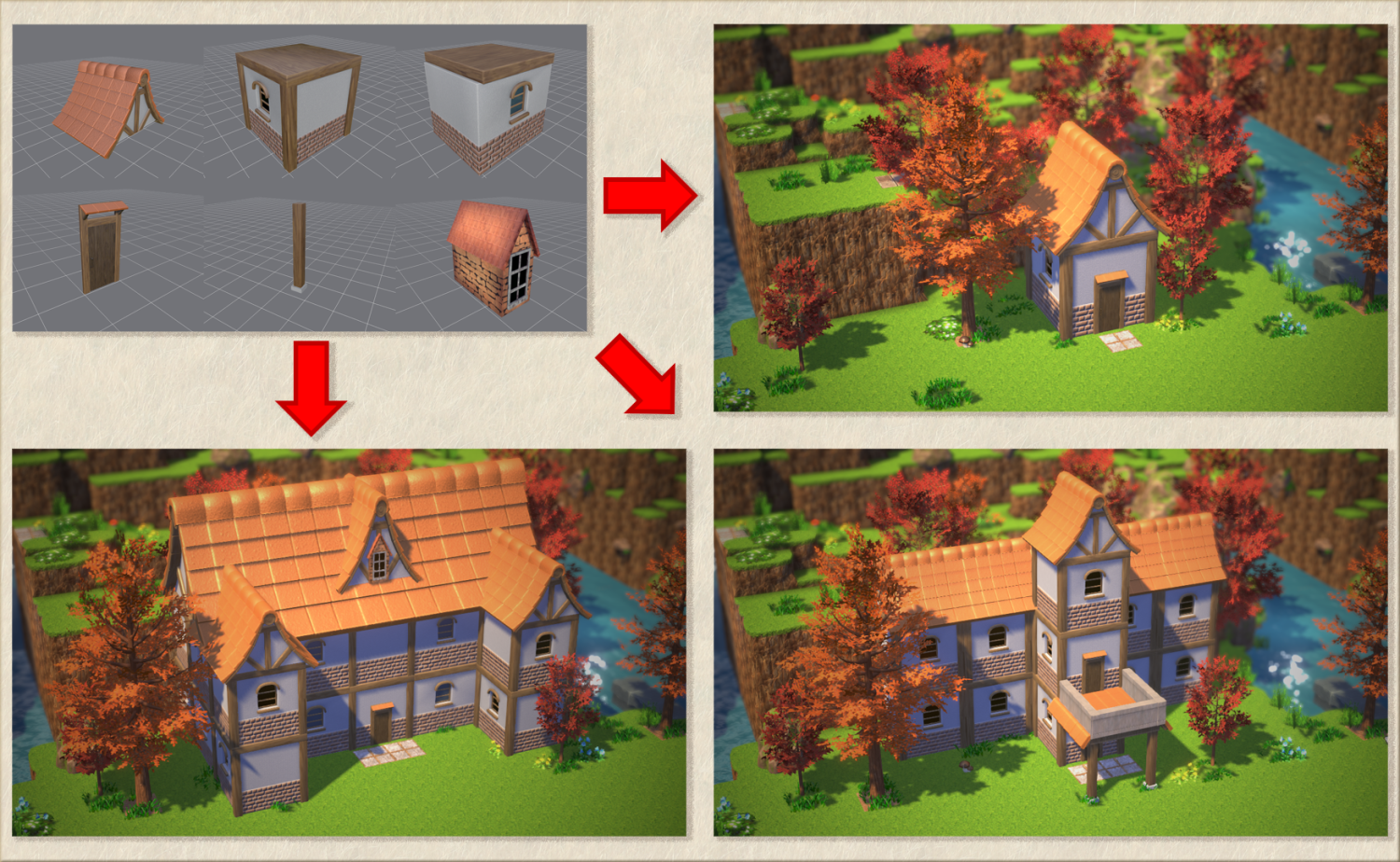
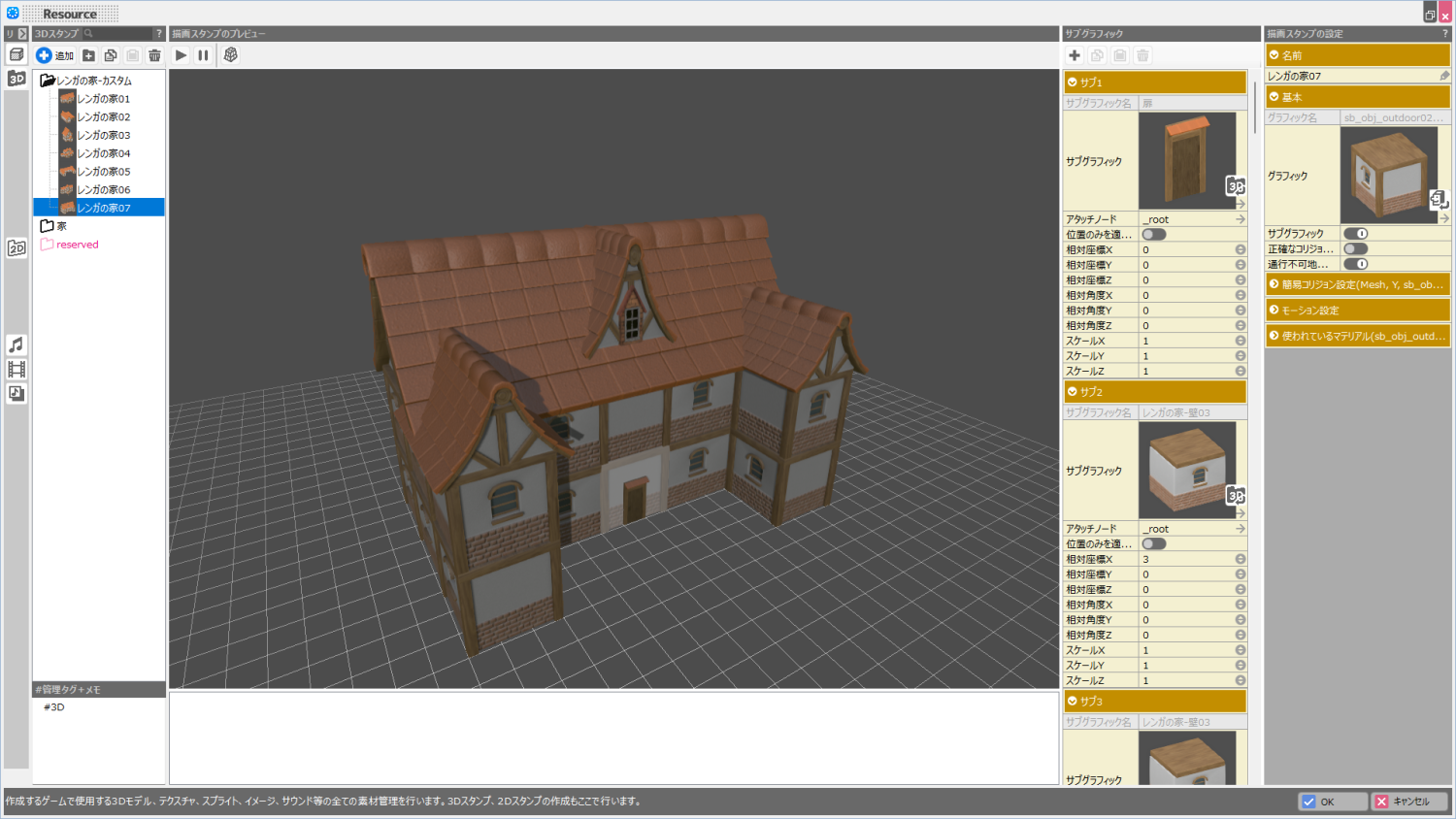
You can also combine other models with moving objects, such as attaching swords to characters, making smoke come out of a locomotive, and so on.
Subgraphic] is a useful function that allows you to create various patterns by combining materials such as 2D/3D/particles.
However, if you use this method to create a grand building with a single brick, the number of polygons used for the "parts that cannot be seen from the surroundings" where the bricks are combined with each other will increase, which has a negative effect.
In this case, in some cases it would be better to create a single building model in a straightforward manner.
As for how much to keep the parts separate, it depends on what you are making, so try it out.
This is the end of this information.
See you then!
